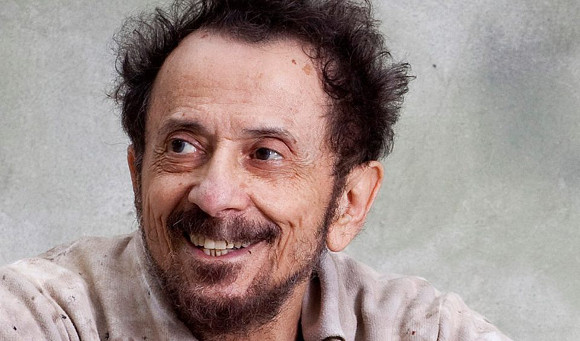
Tom Zé is a Brazilian songwriter, multi-instrumentalist and composer. Zé was one of the pioneers of the South American Tropicalismo Movement of the 1960s, and he, like Caetano Veloso, Gilberto Gil and Gal Costa, was highly influential during that time.
Tom Zé was born on October 11, 1936 in the Bahia Hinterlands of Brazil. As a child, he was highly influenced by the local folklore and the Brazilian Sambas de Roda. He also cited Jackson do Pandeiro and Luiz Gonzaga as great influences, and other artists that he regularly listened to on the National Radio. In 1951, Zé moved to Salvador to further his education. However, he soon joined the “CPC”, where he researched Brazilian folklore. Soon, Zé joined the “Music College of Bahia”, where he studied the violin and the cello with Walter Smetak, the piano with Aida Zolinger, instrumentation with Lindembergue Cardoso, orchestration with Sergio Magnani, and composition with Ernst Widmer. He also took classes in harmony and counterpoint with Jamari Oliveira and Yulo Brandao respectively.
His involvement with the Tropicalismo movement started in 1963 when he met Gilberto Gil and Caetano Veloso at a meeting that was being held by Maria Muniz (a Brazilian Actress). Zé agreed to star in a musical which was to be directed by Veloso and was to feature Gal Costa, Maria Bethania, Perna Froes, as well as Gil Gilberto. The musical was an immense success and it led to recording contracts for almost all of the artists involved, including Zé. He then went on to release the singles “Maria do Colegio de Bahia” and “Parque Industrial”. During this time, Zé was also a part of the Nova Bossa Velha group.
Zé wrote his first LP somewhere in the 1960s, but he had it recorded and released in 1972. The self-titled LP was highly successful and it attracted plenty of attention. In 1973, Zé released “Todos os Olthos”, which was followed by “Estudando o Samba” in 1976 and “Correio da Estacao do Bras” in 1977. His tours in the 1970s were sparse; they included a university circuit with Vicente Barreto in 1976, and a few Gal Costa shows at Sao Paulo. However, Zés popularity suffered at the hands of his exceptionally complex musical ideas, and by 1987 he had returned to his hometown to work at his nephew’s gas station.
In 1989, David Bryne, a Scottish Musician who was at the time a songwriter for “Talking Heads”, discovered Zé’s 1976 record “Estudando de Samba”. Bryne was tremendously impressed by the record and he set out to Brazil to look for Zé. Bryne then signed Zé as his first artist for his ‘Luaka Bop Label’, and in 1991, Zé released a compilation album titled “The Best of Tom Zé”. The album got positive reviews from the Rolling Stones, New York Times, and Billboard and also won a creativity award at Telluride, Colarado. Zé followed his success with another release titled “Hips of Tradition” in 1992.
Zé spent the rest of the decade touring the United States, the United Kingdom, and Brazil. He continued his collaboration with Luaka Bop and released several records with them. His total records after 1997 number well over thirteen. His most recent record was a compilation album from his Tropicalismo days titled “Tropicalia Lixo Logico”.